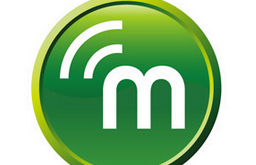Ed note. The mHealth Summit celebrates innovations in mobile technology that are improving health outcomes. This year, for the first time, the mHealth Summit includes a dedicated global health track. UN Dispatch welcomes freelance journalist Lois Parshley, who is reporting from the convention floor.You can follow her on Twitter at @loisparshley. – Mark
In 2011, there were 6 billion cell phone subscribers in the world. Especially in developing countries, where cell phones are arriving in hard-to-reach places that have never had landlines, mobile technology is proving invaluable, quickly becoming a ubiquitous health tool. But just the physical presence of cell phones doesn’t make the technology a functional tool. As any field-savvy community worker will tell you, “Mobiles don’t deliver babies, mothers do.” As access spreads, health workers are learning that program designs are invariably limited by how effective their messaging is.
At its most basic, any messaging campaign can be broken into two parts: ensuring you reach your intended audience, and then communicating as effectively as possible. One of the most basic problems with mobile technology is making sure your tool gets in the right hands. As a doctor from Uganda explained in a plenary session, in some countries phones tend to be owned by males, making any kind of educational campaign targeted at women off-point. Knowing your audience is crucial to getting the right information across; in this case, the Ugandan program needed to develop messages directed at men in order to reach the new mothers for whom they were intended. Theft — of chargers, chips, and expensive add-on tools — is also frequently a problem, and even when in possession of all the right equipment, workers on the ground often confront a lack of infrastructure. In many countries, reliable electricity and consistently functioning cell-phone towers can be hard to find. None of these problems are insurmountable, and the buy-in of telecommunication companies and local governments go a long way. But even the best-designed health program is going to fail unless its tools reach the right people.
Once a system for communicating is in place, the next hurdle is finding what to say. As Stephen Hamill, a communications director at the World Lung Foundation (WLF), explained, the effectiveness of social marketing depends on understanding the psychology of behavior change. Whether it’s encouraging people to stop smoking or getting HIV positive patients to take anti-retroviral drugs, most public health campaigns attempt to change people’s actions. But text messaging may not be the best vehicle to do so.
Humans are more motivated by images and sounds, and while text is informative, Hamill says, “You need to create emotional impact in order to motivate change” — a challenge with only 140 characters. So as a recent WLF anti-tobacco campaign in Vietnam demonstrated, text messaging works best when used in conjunction with multi-media. If after watching a hard-hitting T.V. commercial, viewers can take action by texting, cell phones suddenly become an incredibly effective tool, doubling the impact of the campaign. In essence, Hamill says, this is texting’s best purpose: as an engagement mechanism, rather than as the primary means of reaching people.
This may seem like a sobering take-away for the proliferating education campaigns that rely on texting, but it shouldn’t. As Marc Mitchell of Dtree International demonstrated in a project intended to increase facility-based deliveries in Zanzibar, text messages can still be incredibly crucial: Dtree’s program increased hospital births by almost 30 percent in its first year. But while Dtree used texting, it didn’t rely on text messages to do all the work — they also coordinated with traditional birth mechanics, acknowledged local culture in addressing the hurdles women confront in getting to the hospital, worked with local taxi drivers to provide reliable and affordable transportation.
Mobile technology has the power to solve many global health problems, but it only magnifies one of the world’s most significant health challenges: Communication.
